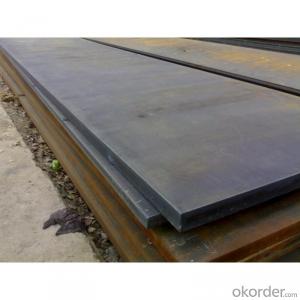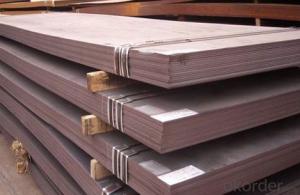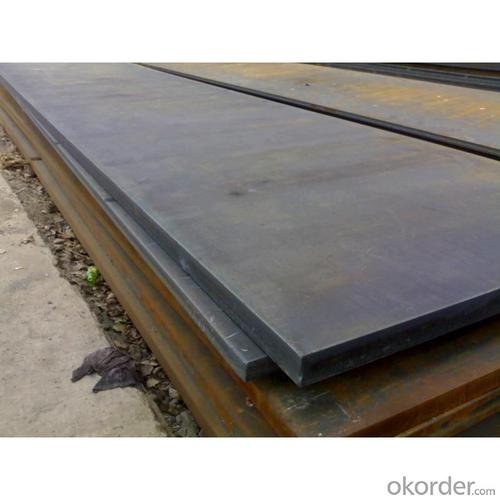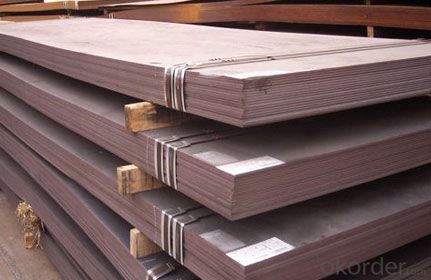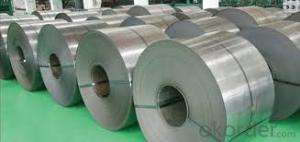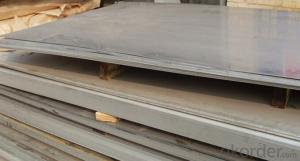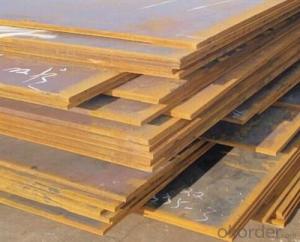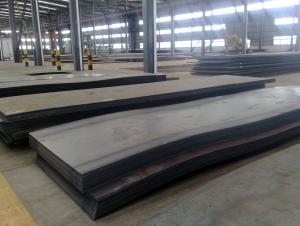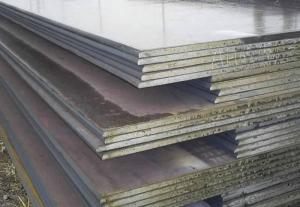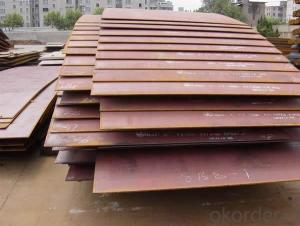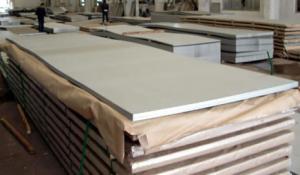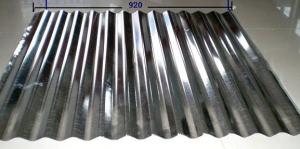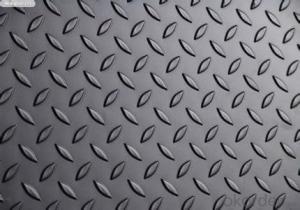Hot Rolled Steel Plate for Shipbuilding Pipeling Good Quality
- Loading Port:
- China main port
- Payment Terms:
- TT OR LC
- Min Order Qty:
- 1000 m.t.
- Supply Capability:
- 10000 m.t./month
OKorder Service Pledge
Quality Product, Order Online Tracking, Timely Delivery
OKorder Financial Service
Credit Rating, Credit Services, Credit Purchasing
You Might Also Like
Structure of Hot Rolled Steel Plate Description
JIS G3131 SPHC\ASTM A569 for shipbuilding and pipeline
Main Features of the Hot Rolled Steel Plate
Hot rolled with good quality
Images Hot Rolled Steel Plate

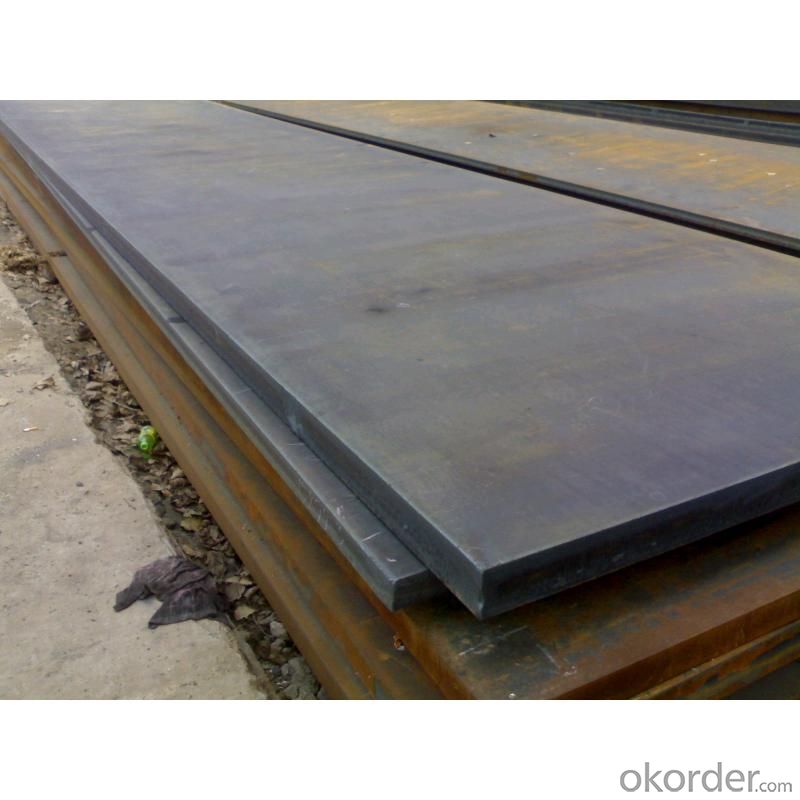
Specification Hot Rolled Steel Plate
Standard: JIS G3131 SPHC\ASTM A569
Thickness: 0.17mm-1.0mm
Place of Origin: Shandong China (Mainland)
Type: Steel sheet
Application:Building
Width:600-1250mm
Length: as your respect
FAQ of Hot Rolled Steel Plate
Quality Insurance
- Q: What are the different profile options available for steel sheets?
- There are several different profile options available for steel sheets, each serving different purposes and offering unique benefits. Some of the most common profile options include: 1. Plain Sheet: This is the simplest and most basic profile option, with a flat surface and no additional features. It is commonly used for general purposes where aesthetics are not a priority. 2. Corrugated Sheet: Corrugated steel sheets have a series of parallel ridges and grooves, creating a wavy pattern. This profile provides extra strength and rigidity, making it ideal for roofing, cladding, and fencing applications. The ridges also enhance water shedding, preventing water accumulation on the surface. 3. Ribbed Sheet: Ribbed steel sheets have a series of raised parallel ridges or ribs running along the length of the sheet. This profile offers improved strength and load-bearing capacity, making it suitable for applications that require structural integrity, such as mezzanine floors, decking, and industrial flooring. 4. Perforated Sheet: Perforated steel sheets have a pattern of holes punched into them, allowing for ventilation, light transmission, and drainage. This profile is commonly used in architectural designs, façades, acoustics, and filtration systems. 5. Tread Plate: Tread plates have a raised pattern of lines or diamonds embossed on the surface. This profile provides extra grip and slip resistance, making it ideal for industrial flooring, stairs, ramps, and walkways. 6. Expanded Metal: Expanded metal sheets are created by cutting and stretching a flat sheet, resulting in a pattern of diamond-shaped openings. This profile offers excellent ventilation, visibility, and security, making it suitable for applications such as grilles, screens, fences, and enclosures. 7. Lipped Sheet: Lipped steel sheets have an edge or lip bent at a 90-degree angle along one or more sides. This profile provides added strength and stiffness, making it commonly used for framing, shelving, and edge protection. These are just a few examples of the different profile options available for steel sheets. The choice of profile depends on the specific requirements of the application, such as strength, durability, aesthetics, and functionality.
- Q: What is the difference between cold rolling and hot rolling?
- Hot rolled steel coil as raw material by pickling descaling after cold rolling, the finished rolling hard volumes, due to continuous deformation caused by cold hardening the hard roll strength and hardness of the rise and decline of toughness index, stamping performance deterioration, only for a simple deformation of parts. Rolled hard rolls can be used as raw material for hot galvanizing plants, because the hot galvanizing units are equipped with annealing lines. The roll weight is usually 6~13.5 tons, and the inside diameter of the steel coil is 610mm. Generally, cold continuous rolling plate and roll should be annealed by continuous annealing (CAPL unit) or bell type furnace to eliminate cold work hardening and rolling stress, and meet the standard mechanical performance indexes. The surface quality, appearance and size accuracy of cold rolled steel plate are superior to those of hot rolled plate.
- Q: Can the steel sheets be easily drilled or machined?
- Yes, steel sheets can be easily drilled or machined with the right tools and equipment.
- Q: What are the weight considerations for steel sheets?
- The weight considerations for steel sheets primarily depend on the thickness and dimensions of the sheet. Thicker and larger sheets will generally be heavier, while thinner and smaller sheets will be lighter. Additionally, the specific type and grade of steel used in the sheet can also affect its weight.
- Q: Can steel sheets be used for electrical switchgear?
- Yes, steel sheets can be used for electrical switchgear. Steel is a common material choice for switchgear enclosures due to its durability, strength, and ability to provide protection from environmental factors such as moisture, dust, and temperature fluctuations. Steel sheets are commonly used in the construction of switchgear cabinets and enclosures to provide a robust and secure housing for electrical components. The steel sheets used for switchgear are typically coated or painted to provide additional protection against corrosion. Additionally, steel is a good conductor of heat, which helps dissipate any heat generated by the electrical components within the switchgear. Overall, steel sheets are a suitable material for electrical switchgear enclosures due to their mechanical properties, protective capabilities, and thermal conductivity.
- Q: What is the difference between a hot rolled and pickled steel sheet?
- The production of a hot rolled steel sheet involves heating the steel above its recrystallization temperature, typically around 1700°F (926°C), and then rolling it into the desired shape or thickness. This process leads to the formation of a scale or oxide layer on the surface of the steel. In contrast, a pickled steel sheet goes through an additional step known as pickling, which removes the scale or oxide layer formed during the hot rolling process. This step is usually carried out by immersing the steel sheet in an acid bath, such as hydrochloric acid, to dissolve the scale. The main distinction between a hot rolled and pickled steel sheet lies in the surface finish and cleanliness. Due to the presence of scale, a hot rolled steel sheet will have a rougher surface, which may not be visually appealing and might require further processing or finishing. On the other hand, a pickled steel sheet will exhibit a smoother and cleaner surface as a result of the scale removal. Another difference lies in the corrosion resistance of the two types of steel sheets. Hot rolled steel, with its scale, is more prone to corrosion, especially in humid or corrosive environments. Conversely, pickled steel possesses better corrosion resistance due to the elimination of the scale and the subsequent application of a protective coating or treatment. Regarding applications, hot rolled steel sheets are commonly used in structural components, construction materials, and general fabrication where surface finish is not a critical factor. In contrast, pickled steel sheets are often preferred in industries such as automotive, appliances, and manufacturing, where a smooth and clean surface is desired for further processing or finishing. In summary, the difference between a hot rolled and pickled steel sheet lies in the surface finish, cleanliness, and corrosion resistance. While hot rolled steel has a rougher surface due to the presence of scale, pickled steel undergoes an acid bath to remove the scale, resulting in a smoother and cleaner surface. Pickled steel also offers better resistance to corrosion and is preferred in applications where a high-quality surface finish is required.
- Q: How do steel sheets handle extreme weather conditions?
- Steel sheets are highly resistant to extreme weather conditions. They are able to withstand high winds, heavy rain, snow, and even hail. Their strength and durability make them ideal for withstanding harsh weather elements, ensuring that they can protect buildings and structures effectively. Additionally, steel sheets are non-combustible, making them resistant to fire, which is another advantage in extreme weather situations.
- Q: Are the steel sheets suitable for architectural applications?
- Yes, steel sheets are suitable for architectural applications. Steel is a versatile material that offers several advantages for architectural purposes. It is strong, durable, and can withstand harsh weather conditions, making it ideal for various architectural elements such as roofing, cladding, and facades. Steel sheets also offer design flexibility, allowing architects to create unique and innovative structures. Additionally, steel is a sustainable material as it is recyclable and has a long lifespan, making it an environmentally friendly choice for architectural applications. Overall, steel sheets are a reliable and versatile option for architects looking to incorporate structural integrity, aesthetic appeal, and sustainability into their designs.
- Q: Can steel sheets be customized according to specific requirements?
- Indeed, it is possible to customize steel sheets to meet specific requirements. Steel manufacturers possess the capacity to manufacture steel sheets in different sizes, thicknesses, and finishes, catering to the unique needs of customers. The customization options extend to include specific alloy compositions, surface treatments, and mechanical properties. By employing cutting, shearing, bending, and shaping techniques, steel sheets can be tailor-made to fit precise dimensions and shapes, suitable for various applications. Furthermore, manufacturers can also accommodate personalized branding, labeling, and packaging preferences as dictated by the customer. In conclusion, steel sheets offer a remarkable degree of flexibility and can be readily customized to satisfy specific requirements.
- Q: How are steel sheets protected during transportation by air?
- Steel sheets are protected during transportation by air through various measures such as packaging them in protective covers, using cushioning materials like foam or bubble wrap, securing them with straps or bands to prevent movement, and placing them in sturdy crates or pallets to minimize the risk of damage. Additionally, some steel sheets may undergo corrosion-resistant coatings or be stored in climate-controlled containers to protect them from moisture or extreme temperature changes during transit.
Send your message to us
Hot Rolled Steel Plate for Shipbuilding Pipeling Good Quality
- Loading Port:
- China main port
- Payment Terms:
- TT OR LC
- Min Order Qty:
- 1000 m.t.
- Supply Capability:
- 10000 m.t./month
OKorder Service Pledge
Quality Product, Order Online Tracking, Timely Delivery
OKorder Financial Service
Credit Rating, Credit Services, Credit Purchasing
Similar products
Hot products
Hot Searches
Related keywords
